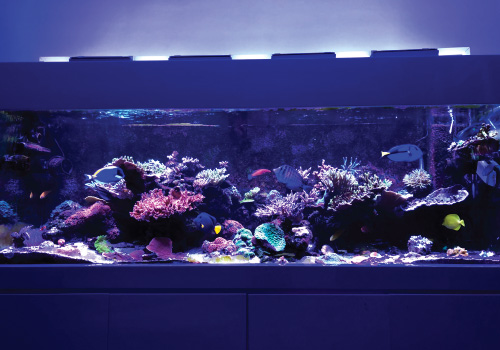The Key Parameters to Measure in Your Reef Tank
CategoriesUncategorized
If you are new to reefing, you might feel a bit overwhelmed by all the parameters you need to keep your eye on, even though you might not quite understand how it keeps your aquatic life safe, healthy, and growing. In this article, we list the key parameters to track and explain their importance.
1) Temperature: Most of the corals and fish so common to our hobby originate from tropical reefs. Their natural habitat has a stable temperature ranging between 22 and 29 degrees Celsius (73 and 84 degrees Fahrenheit). Depending on where you live, you might need to make some interventions to replicate these ideal temperature values in your tank. Different species of aquatic life can have different temperature preferences, but the most common temperature range that seems acceptable to most animals is between 25.5-26.6 Celsius (78-80 Fahrenheit). It’s also equally important to ensure a consistent temperature that doesn’t fluctuate.
2) Salinity: Salinity refers to the amount of salt in your tank. The ocean’s salinity is about 35g/L, so this is what you should aim to replicate in your tank. It’s not easy to directly measure salinity in your tank, so most hobbyists measure the specific gravity of the water as a proxy for salinity, which should be around 1.025.
3) Alkalinity: Alkalinity is important because it’s a way to estimate the amount of bicarbonate (one of the main substances required to build coral skeletons) that is available in your tank, and because it affects the PH of the water.
The optimal range for alkalinity is 7-12 dKH. It’s not enough to ensure that the alkalinity in your tank sticks to this range, as you also need to keep this parameter stable; if there is a need to change the alkalinity, do so very gradually to avoid shocking the corals and fish in your tank.
4) Calcium: Similar to bicarbonate, calcium is important for your coral’s bony skeletons. The ideal range is around 400 ppm.
5) Magnesium: Magnesium’s main role is the interaction with the calcium and alkalinity balance in the reef tank, as it stops precipitation of calcium carbonate. Without magnesium, the precipitation of calcium carbonate would increase enough to disturb the natural levels of calcium and alkalinity. The natural ocean concentration of magnesium is 1285 ppm. In your reef tank, you can aim for the range of 1200-1400 ppm.
6) Phosphate: Phosphates occur naturally on reefs in their natural habitats, where they are usually present at levels around 13 ppm. The problem with phosphates is that they can lead to an algae growth problem. In the ocean, this is not a problem, as natural algae-eating controls are present. In your tank, however, this is an issue. Simultaneously, you should not aim for a phosphate level of 0 ppm, as it is an important nutrient for your aquatic life. The optimal range is 0.01-0.03 ppm.
7) Ammonia: Ammonia is simply a by-product of organic waste decomposing in your tank. This substance is highly toxic for your aquatic life and an ideal reading is almost 0 ppm. The only exception is if you have just bought your tank and are initiating a nitrogen cycle. You can learn more about the nitrogen cycle here: https://www.reefkinetics.com/2019/10/27/a-beginners-guide-to-understanding-the-nitrogen-cycle/
8) Nitrite: Nitrite is the intermediate product in the nitrogen cycle. Like ammonia, nitrite is highly toxic to your corals and fish and should always be almost 0 ppm except in the very beginning when you are initiating the nitrogen cycle in your tank.
9) Nitrate: Nitrates are the product of a full nitrogen cycle, during which bacteria transform ammonia into nitrites, and then into nitrates. Nitrate levels should not exceed 30-40 ppm. Be careful of high levels of nitrates, as it can be toxic to your aquatic life and can also lead to an out-of-control algae growth in your tank. As a rule of thumb, anything above 40 ppm means you need to carry out a partial water change, removing no more than 20% of the total volume of water in your tank and adding new saltwater. Ideally, you want nitrate levels to be between 2-5 ppm for corals coloration.
If you are looking for a super-efficient and convenient solution to test for most of the parameters above, in the most flexible way possible, then you owe it to yourself to check out the ReefBot.
As always, if you have any questions or feedback, please get in touch with us at [email protected]. We’d love to hear from you!
Download the Reef Kinetics Cloud Controller App:



Recent Comments